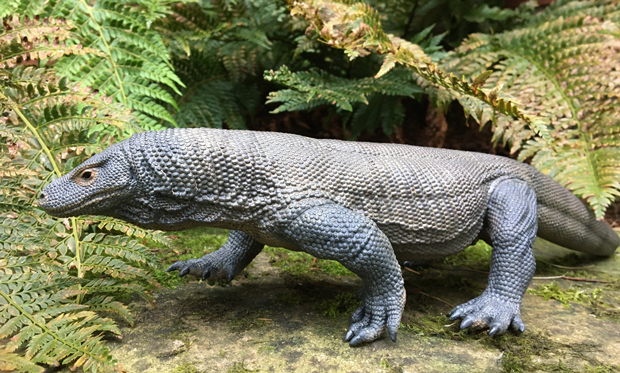Beware of a new Dragon in the Woods – Varanus bitatawa a New Species
Finding a new species of vertebrate is a rare event. Finding a new, large species, an animal that would be described as a member of the “mega fauna” is exceptional, but a new 2-metre-long species of Monitor Lizard (genus Varanus) has just been brought to the attention of western scientists.
The giant lizard resides in the Philippines, in the northern forests of Luzon island. Luzon island is the largest island that makes up the Philippines and despite having parts of it densely populated (it is one of the most populated islands on Earth), it still has plenty of natural wonders awaiting discovery.
Monitor Lizard
The genus Varanus (Monitor Lizards) contains nearly 30 species, all of which live in the Old World, with species found in Africa, southern Asia, the Philippines and Australia. The largest lizard in the world today is a Monitor Lizard – the Komodo dragon (V. komodoensis), it too has revealed some surprising discoveries recently, with confirmed evidence that this lizard that can grow up to 3 metres long and weigh 90 kilogrammes has a venomous bite.
Recently, a scientific paper was published suggesting that a genus of dinosaur called Sinornithosaurus may also have been venomous.
To read more about this: Sinornithosaurus – A Dinosaur with Venom.
This new species of monitor, although longer than a man, is actually very lightly built with the largest specimens so far weighing a little more than 10 kilogrammes. Half the body length of this new species, named Varanus bitatawa is made up of tail.
The animal poses no threat to humans as it appears to be entirely herbivorous. It has remained undescribed for so long as it is extremely secretive and spends a great deal of time living in trees, where it finds fruit to eat. This new Monitor Lizard, described by the scientists who found it as “spectacular”, is a very striking animal indeed with bright yellow, blue and green skin.
A Model of the Largest Living Lizard – the Komodo Dragon
Picture credit: Everything Dinosaur
The model (above) is the Rebor Komodo dragon replica, to view this figure (whilst stocks last): Rebor Replicas and Prehistoric Animal Figures.
This lizard may be completely new to western science, but to the local tribes people of the forests of northern Luzon, the animal is very well known. For centuries the locals have hunted it for food, it is reputed to taste extremely pleasant and such animals provide a valuable source of protein for the indigenous people. We suppose it would be kind of like a version of “corn fed chicken”. The secretive nature of this lizard may well be a result of hunting pressure with only the most reclusive and shy animals avoiding the attention of the local hunters. At the same time, this Monitor remained unknown to scientists in the west.
International Research Team
The American, Dutch and Philippines based research team had found plenty of evidence of a large, arboreal lizard. Many trees had claw marks on the trunk and the native people had talked about a lizard that was good to eat, but until now no documentary proof of this lizard’s existence had been collected.
One of the authors of the paper on this new species, Dr Rafe Brown stated:
“It is an incredible animal”.
The paper has been published in the scientific journal “Biology Letters”. In the journal, the researchers describe how rare it is to find such a large terrestrial animal new to science.
The new species, which is called Varanus bitatawa, is thought to live almost entirely on fruit, making it one of just three species of fruit-eating Monitor Lizards in the world. Living as it does in the tree canopy, this large lizard has remained undetected to the eyes of western scientists, despite a number of scientific expeditions to this part of the Philippines to map the diversity of the fauna and flora.
The new species of monitor lives at least 150km away from its nearest relative, another lizard called V. olivaceus, which also lives in trees and eats fruit.







Leave A Comment